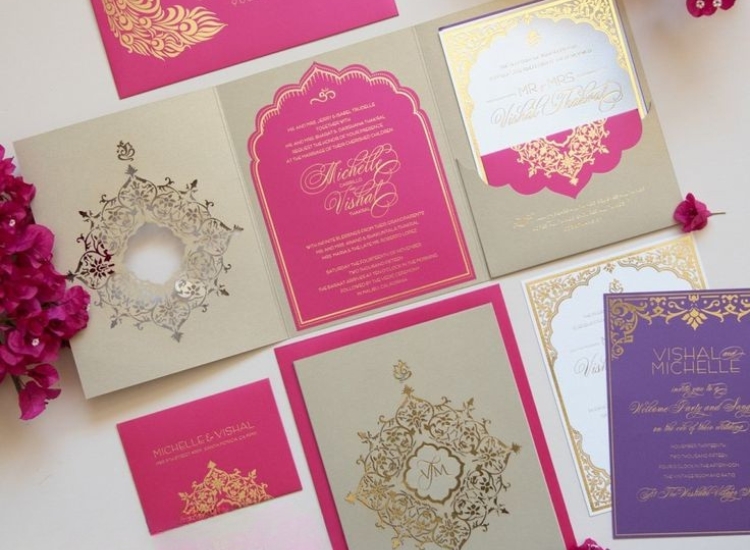The market is flooded with a plethora of printing methods/styles to beautify wedding invitations. Each printing style has its own benefits and unique way of printing. Choosing a suitable printing method can be a tedious task for people who have no idea about the available wedding invitation printing styles.
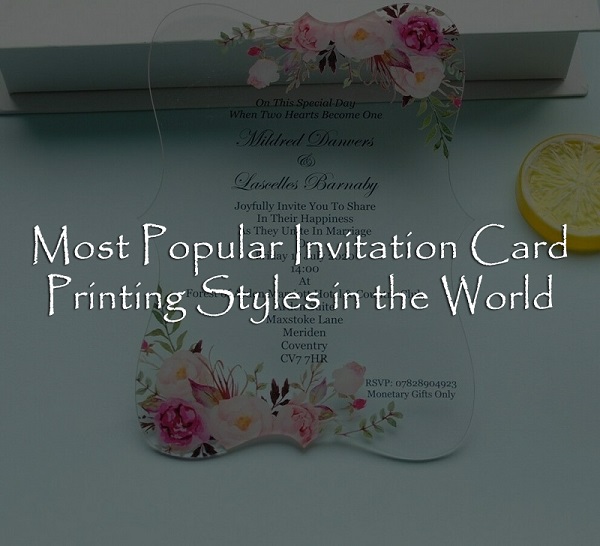
So here are some trending and most popular invitation printing methods by 123WeddingCards to help you choose the best one for your wedding cards and wedding stationery. Get all the details about them and get some inspiration for your own invitation printing.
1. Digital Printing:
It is the most popular, advance, and trendy way of printing wedding invitations today. It is fast, easy, economical, and looks just as good. A digital printer is similar to a laser printer; the only difference being that the former is bulkier and uses more space. The digital printing method can be used with a variety of papers, producing a range of bright tones and shades. They are cost-effective with a single card costing as low as $1. This is the fastest of all methods, taking only a few days.
The digital printing method is done in two variants:
- Digital White Printing: This type of printing first prints white ink as background on the paper, followed by printing colors. In this way, the colors look more saturated and bright which adds on an enhanced finish to the card. Digital white printing costs a few added cents but it’s totally worth it!
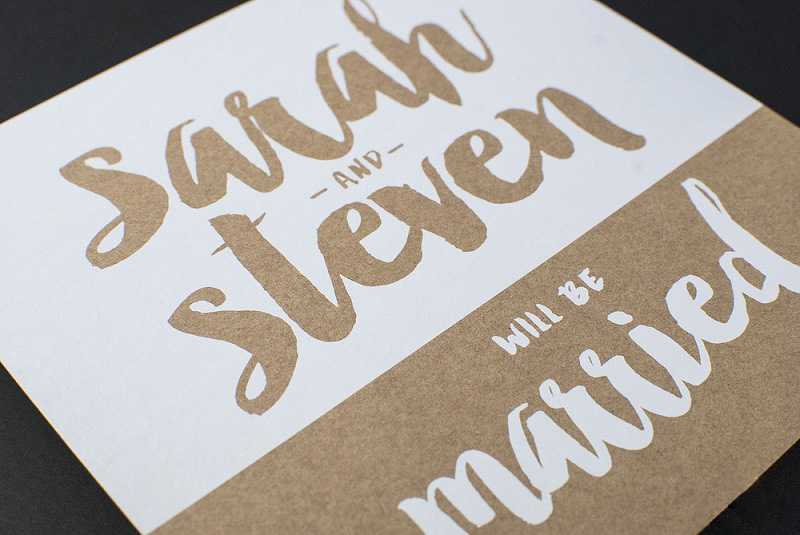
- Digital Foil Printing: This form of digital printing is the most recent development in modern printing. It offers an economical alternative to stamp foil printing. In this, heat is used to adhere to foil on the paper. The design this created adds a shimmery touch to the card. However, the details aren’t as sharp and the print is completely flat, as in the stamped foil printing.
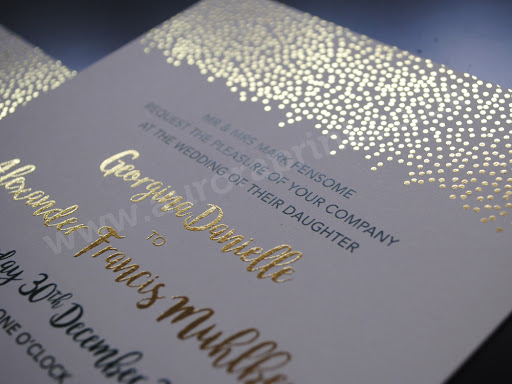
2. Letterpress Printing:
It is the modern, sophisticated version of the first printing process in the world. It is similar to block printing but uses metal plates dipped in ink to impress ink on paper (in reverse), forming a beautiful composition. Letterpress printing requires a thick, soft and firm base. Thus, cotton papers the best-sought option. Letterpress printing, however, is made for use with only one ink at a time. This means that cards can be printed with one ink at a time and multiple inks would require multiple attempts at printing. As a result of this, each card costs up to $1.50 – $2 extra per print. But the cost isn’t a hindrance for couples who can go to any lengths for that unique touch to their cards.
Letterpress printing uses a technique called overprinting which uses two colors at a time. The colors create a combined color where the two colors merge. For example, where red and yellow merged, orange was the result. It is a labor-intensive process and can take up anywhere from two weeks to two months.
3. Foil Stamping/Foil Printing:
The latest trend in wedding invitation printing is foil-stamped invitation printing. It is also called ‘dry painting’ because of its ‘no paint’ policy. It is similar to letterpress printing. The only difference is that it uses foil which sticks to the paper base with an adhesive medium. Foils are available in every color of the rainbow spectrum.
They are a bit costly than regular printing methods but the lustrous charm is totally worth going for! After all, who doesn’t want a royal touch? Foil printing is the most expensive process of all and is often outsourced. It can take anywhere from ten business days to two months.
4. Offset Printing (Spot Colour):
This printing method is also called an offset printing method or lithography. This also results in a flat print, just like digital printing. However, digital printing is limited to only four primary colors- cyan, yellow, black and magenta. That’s when spot color photography comes into the spotlight because can use up to twelve colors. Like letterpress printing, every color print requires a fresh set of metal plates. The cost per card adds up to$1.50. This requires slightly more time than digital printing which can extend to a few weeks because each order calls for making customized metal plates.
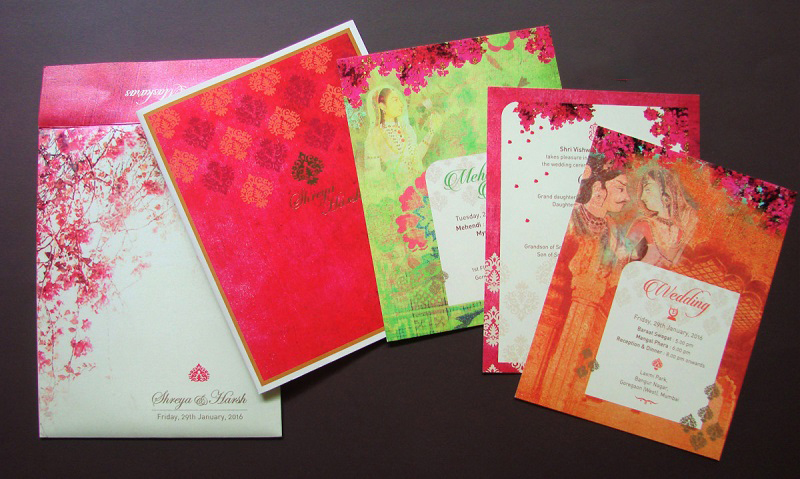
5. Embossed Printing (Engraving):
This is another technique, which gives a 3D look to your card. Also called embossed printing, it uses metal plates which are dipped into colored ink and then impressed on the paper – a depression forms on the front and there’s an indentation on the back of the card. The letters get an embossed touch. It uses a stiff and soft paper base. The ink has to be thick so that light-color ink can show up on dark papers and vice versa. Tissue paper is used to protect the print from smudging.
It requires a specialized set-up that focuses only on engraving. Each card can cost up to $20 if your order is small. But you can also win a hefty discount for a large order. The entire process can take up to two to six weeks to complete.
6. Thermography:
It is the modern mix of spot color printing and engraving. As the name goes, thermography uses heat to melt color and then letters are engraved on the paper. The color is actually a resin-based powder which is heated. When dried up, it gets a soft, shiny and plastic-like smooth touch. The choice of colors is limited to 12 but it is the best if you’re looking for embossed color and print.
Also, there are no grooves on the back of the card. It doesn’t cost a heavy price but each color has to be paid separately. It completes quickly – within a few days.
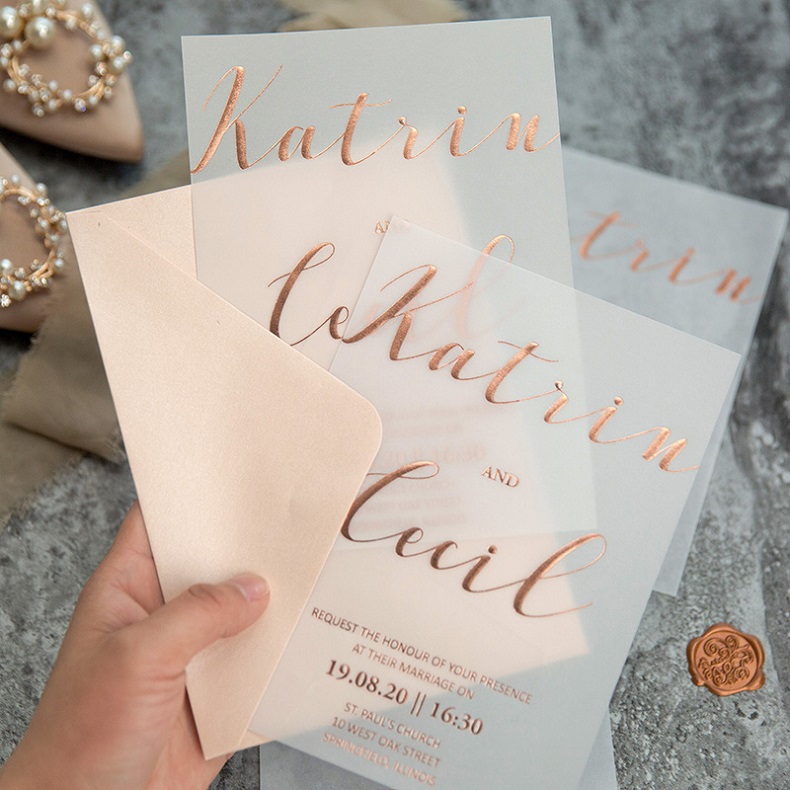
7. Screen Printing:
Screen Printing is the most common printing style used in invitation card printing. It is a printing procedure where a mesh is used to transfer ink onto a substrate, apart from in areas made watertight to the ink by a blocking model. A blade is stimulated across the screen to fill the open mesh apertures with ink, and a reverse stroke then causes the screen to touch the substrate shortly along a line of contact. This causes the ink to wet the substrate and be pulled out of the mesh apertures as the screen springs back after the blade has passed. One color is printed at a time, so several screens can be used to produce a multicolored image or design.
There are various terms used for the Screen printing technique. Usually, the process was called silkscreen printing because silk was used in the process. It is also known as serigraphy, and serigraph printing. Currently, synthetic threads are commonly used in the screen printing process.
One of the most in-demand wedding cards is screen printed wedding invitations. This kind of wedding invites is adored by millions across the world. If your wedding is near and if you are also looking for someone who can craft impeccable silk screen wedding invitations then do connect with us. For a better idea about how your silkscreen wedding invite would look like, you can visit our online portal and get the glimpse of your would-be invitation cards. When it comes to screen printing, the best type of design is with one or two colors where there will be no delicate lines or small fonts.
One of the best kinds of screen printed marriage cards comes with metallic or white ink imprinted on the color paper. You can also choose the cotton stock as your second option. There are plenty of other things on which you can imprint your silkscreen wedding invites apart from paper and it is, think wood veneer, tote bags, tea towels, etc.
These are the top seven (plus two!) methods of printing wedding card invitations in Los Angeles. Each type beautifies the card in a unique way, giving it your own personal touch! Choosing a perfect print for your wedding invitations can be cumbersome but that’s what sets the base for your entire wedding.
Remember: Your wedding invite sets the first impression of your entire wedding celebration.
Happy wedding!




